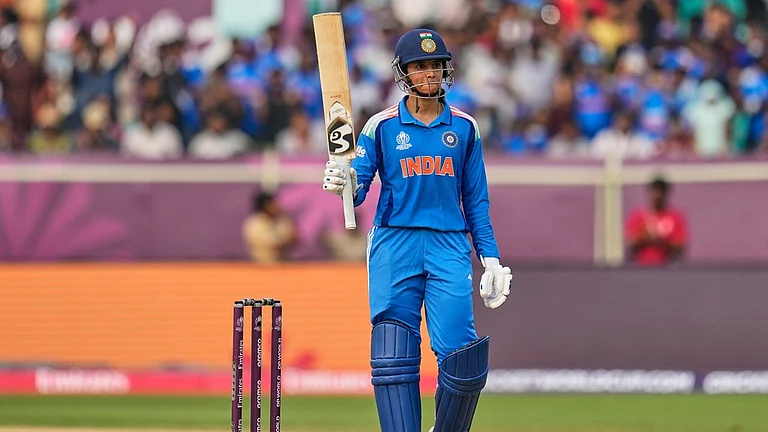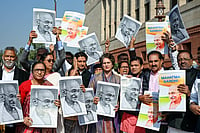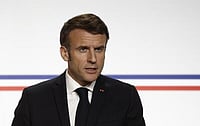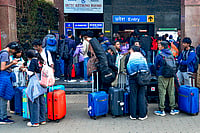This is a monumental book. And will no doubt be compared with two other monumentalbooks that have appeared recently on India’s nuclear situation—AshleyTellis’ India’s Emerging Nuclear Posture: Between Recessed Deterrent and ReadyArsenal and George Perkovich’s India’s Nuclear Bomb: Impact on GlobalProliferation. Tellis made the Pokhran tests in May 1998 his starting point to examineIndia’s nuclear strategy against the backdrop of its national interests,institutional objectives and security goals. He concluded, as, indeed, Karnad does withgreater acerbity, that India has quite some way to go before becoming a nuclear weaponstate of any consequence. Tellis went on to review the strategic choices facing Indiawhile nuclear-arming itself and the implications for its neighbours, the US and the world.Perkovich took a historical approach, describing India’s convoluted nucleardecision-making process that had led to the stop-go approach in its nuclear quest; thenPokhran occurred, which radically changed the structure of the international nuclearregime. Bharat Karnad, like Perkovich, highlights the contradictory policy impulsesapparent in India’s nuclear decision-making. There were long periods of inactivitybut India was steadfast in not closing its nuclear option.
This ambivalent policy drove the nuclear realists (hawks in common parlance) todistraction. Not going overtly nuclear kept the left liberals (the "doves") ingood humour. The modality, however, of "keeping the option open" fully satisfiedthe owls in India’s strategic aviary as being ideal for its political and economicinterests. Until the Shakti tests happened in Pokhran. Karnad concedes that India wascanny; whilst pleading for global and comprehensive disarmament it had diligently pursuedits nuclear weaponisation programme. Hypocritical? Unavoidable? Or pragmatic? Answers tothese questions differentiate the various schisms on the nuclear question in India.
The author has somewhat self-consciously identified himself as being a "prominentcivilian hawk", "muscular", "leading theoretician","articulate proponent" of nuclear "maximalism", and"super-realist" in the blurb. The self-image of "realists",incidentally, is of being hard-headed, clear-eyed and unsentimental. Karnad has based hisresearch for his book on recently declassified official records in the US and UK, apartfrom extensive interviews. The paucity of references to Indian documentation—they arejust not available—has led the author to rely heavily on his interviews withimportant individuals in nuclear decision-making circles. Relying on reminiscences,however, is fraught with several dangers—failing memories, confused chronologies. Theother problem is that former bureaucrats invariably portray themselves as being largerthan life while giving personalised accounts of great past deeds.
But if one keeps in mind these caveats, there are at least three new bits ofinformation in Karnad’s book that are worth highlighting. First, that Nehru was awarethat the US and UK would provide a nuclear umbrella to keep India safe from Chineseattack. Second, Indira Gandhi had seriously evaluated an Indian and, later, a jointIndian-Israeli attack upon Pakistan’s nuclear facilities before reviving theweaponisation programme. Third, the nuclear tests in May 1998 owed "less toVajpayee’s commitment to make India a nuclear weapons state or to his party’ssupport for such a move, than to the firm push imparted by (Brajesh) Mishra". Theseassertions are likely to arouse some controversy.
Karnad assesses the nuclear threat to India as arising not only from Pakistan, "aplainly unequal foe that is more pest than threat", but also from "thewilfulness of the United States and the sustained, if opportunistic belligerence ofChina". Strong words. His prescription to counter these threats is more alarming: by"securing the decisive military capability featuring thermonuclear weapons andintercontinental ballistic missiles on a war footing". This would require India, likethe other nuclear weapons powers, to "test, modify, and test again until the weapondesigns are shown to work". He blames India’s lack of the "will topower" and "defensive realism" for its "weak-kneed policies".
In truth, Karnad’s thesis invests too hugely in security, military security andnuclear security, to ensure India’s place in the sun. This is a natural outflow ofthe strategist’s narrowed vision of the world. Even if viewed exclusively through theprism of security, we can hardly ignore the threats to internal security from terrorism orlack of governance. And what of threats to human security, by discounting the needs ofhealth and education? The transnational dangers from drugs-smuggling and money-launderingare greater imminent threats to India’s security than nuclear weapons. Indeed,it’s arguable whether Pokhran has added or subtracted from India’s security.
An easy read, lucidly written, this book is likely to receive bouquets and brickbats inequal measure.
(P.R. Chari is director of the Institute of Peace and Conflict Studies.)


























